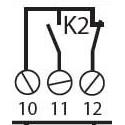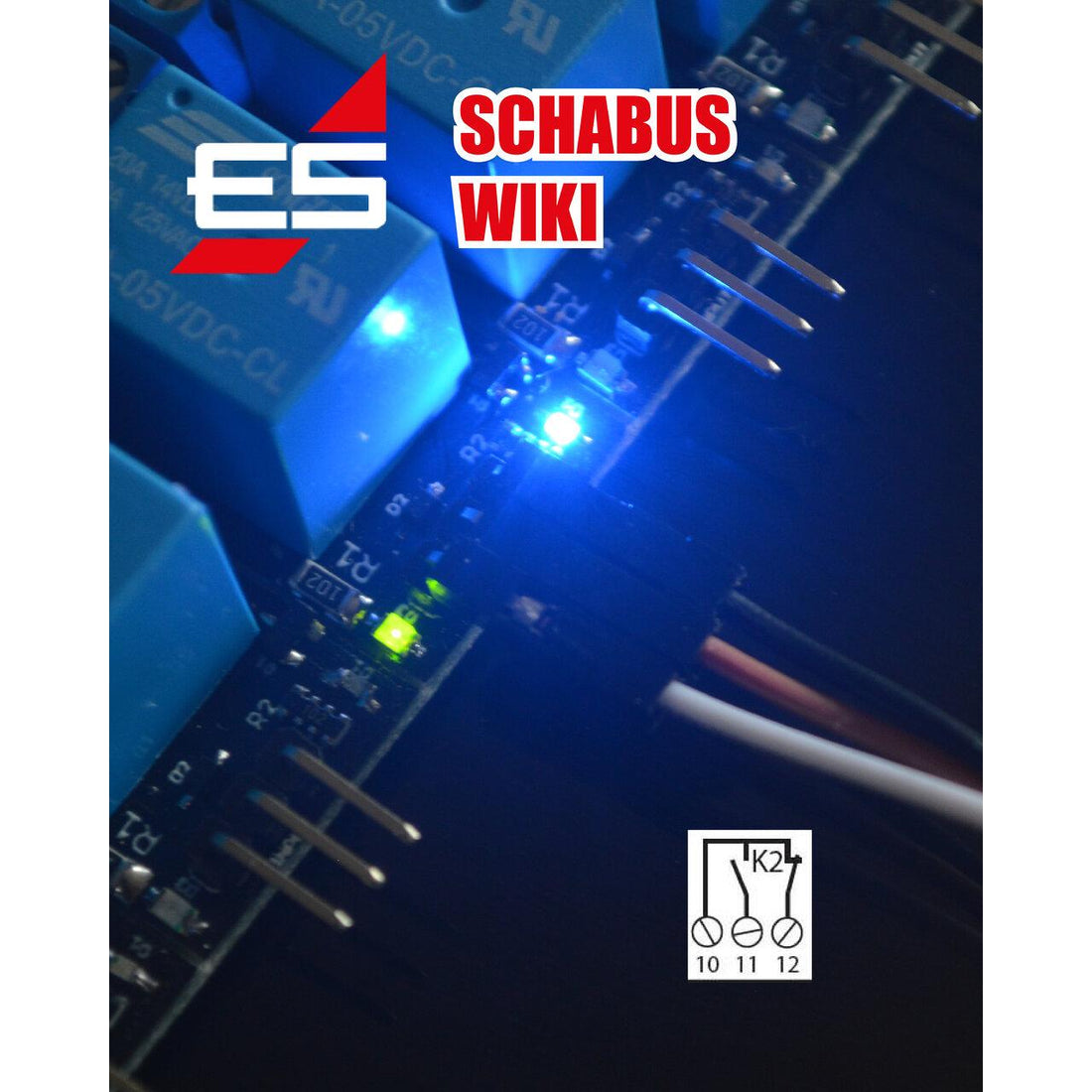
o a relay contact is shown, here from a SHT 5002 level controller:
10: common connection
(com) = common
11: Normally open contact
(no) = normally open
12: Normally closed contact
(nc) = normally closed
The diagram always shows the relay not actuated; it is said to be "not energized." The term comes from the relay's internal workings, where a coil magnetically "attracts" the switching blade.
On some Elektrotechnik Schabus devices, the relays are energized in monitoring mode when switched on, e.g., the SHT 5000. Other devices, such as the SHT 5001, only energize the relay when an event has actually occurred. Always refer to the article on relays in the operating instructions, which provides information about the relay switching states.
Relays are also used in our socket devices, which are connected and switched through. Usually, a single-phase connection or disconnection is performed, and a potential is present here, namely the AC mains voltage. Socket devices are not potential-free contacts!
A special case is the BBB300 (item no. 200603 ) . With this small component, you can turn a switched socket into a potential-free contact. The BBB300 contains a high-quality Finder® relay with gold-rhodium contacts, which can switch both extremely low currents and voltages as well as higher power levels. This relay only operates as a normally open contact, meaning that when the socket is switched on, the normally open contact is closed, thus providing a stable connection between the two contacts.

